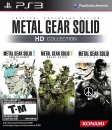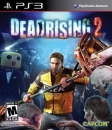I have little time today (and I need to start to play this game) so I will use GAF's summary.
| Accepting everything else as equal, the game's core visuals differ in two ways on current-gen. First and foremost, PS4 makes use of a skin-shading technique known as subsurface scattering, while Xbox One does not. A detailed normal map is in place on both consoles, and in Snake's case this puts all his wrinkles and scars on show. However, on PS4 this is used as a base layer, on top of which another is placed to filter oncoming light, and also blend shadows more naturally across his face. This still allows us to see these raw details, but lighting conditions dictate the extent to which they're visible - much like the way actual human skin tissue layers up to diffuse light. For Xbox One in its current state, this extra pass is essentially missing in many cases - as you can see in our zoomers below. This means the normal map looks rougher with all surface details presented bare (and in many ways matches the look of Xbox 360 and PS3 versions, albeit with a higher resolution map). It must be stressed that this only affects extreme character close-ups, but it's a strange omission given Xbox One's parity in character detail with PC and PS4 in Ground Zeroes - both of which benefitted from the subsurface scattering effect. The second difference is in its post-effects. .Both PS4 and Xbox One offer an excellent suite of photographic effects, simulating camera depth of field, lens flare, and exposure levels with HDR when entering and leaving interiors to face brightly lit areas However, a drop in resolution for Xbox One's per-object motion blur is noticed, as best seen in this still shot. This manifests in cut-scenes and during high-speed chases, where a horse's galloping hooves leave behind a pixelated trail on Microsoft's platform. It's tough to catch by eye, but the effect blends in correctly with the object's contours on PS4, with no aliasing. However, we do see limits to the engine on PS4 and Xbox One. Cut-scenes run at a practically faultless 60fps, even at points you'd presume would cause it some strain. Bizarrely, on rare occasions we get hard locks to the 30fps line on PS4, and at around 50fps on Xbox One - an unusual example being close-ups of Kaz Miller's face with his glasses on (spotted on two occasions). We had to search far and wide to pin such moments down however, and these are momentary anomalies in the face of an otherwise faultless 60fps game. On the last-gen front, frame-rate is where things take a nasty turn for overall playability. PS3 and Xbox 360 really struggle to match up to even a half-refresh 30fps target here, with its alpha effects and huge draw distances causing frequent drops below. In fact, PS3 suffers the most, with several cut-scenes unfolding at a locked 20fps, while 360 fluctuates between 20-30fps a little more freely. However, the differences blend somewhat during open world gameplay. Both have v-sync engaged, and the end result in gameplay feels heavily compromised by the magnitude of the game's level design - frame-rate number fluctuates wildly between 20-30fps during any serious gunplay. A full 1080p picture on PS4 is one such merit, while Xbox One upscales from 1600x900 to produce a slightly softer result at range - albeit with results that are still respectable. Lower resolution motion blur on Xbox One also causes more banding on objects in motion, while extreme close-ups on characters reveals an absence of a subtler, subsurface scattering pass present on PS4. Curiously, this was in place for Ground Zeroes on Xbox One, but it's since gone missing - meaning character complexions can appear slightly more coarse up close. All of which makes PS4 a fair recommendation on current-gen, though Xbox One holds up in every other aspect and with the game in full flight, the experience is very, very similar indeed. Both are also in a different league entirely to the PS3 and Xbox 360 editions; the most glaring downgrade here being the sluggish, 20-30fps range of performance on last-gen (and sometimes lower). It can't be stressed enough; Metal Gear Solid 5 may have been built with older consoles in mind, but the ambition clearly outweighs these consoles' capabilities in The Phantom Pain |
http://www.eurogamer.net/articles/digitalfoundry-2015-metal-gear-solid-5-phantom-pain-face-off
A bit unfair in my opinion but I'm ok with that note...
* Note: It's worth noting Xbox One runs on its day one patch 1.01 in our tests here (counting in at 726mb), while PS4 remains unpatched - though both game install sizes total to around 27GB.




















































